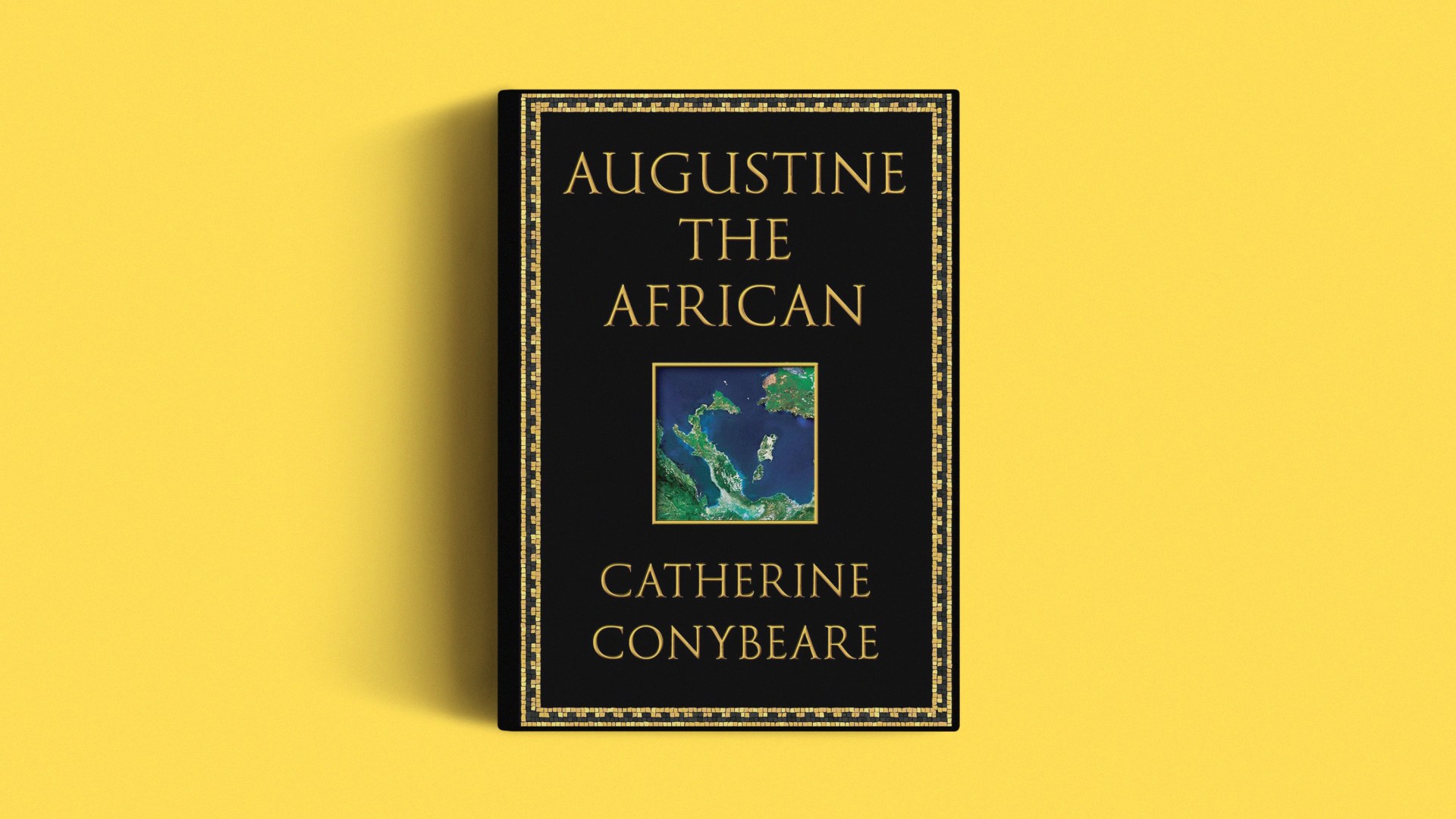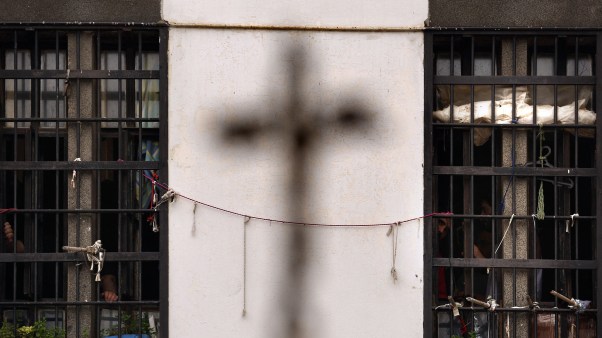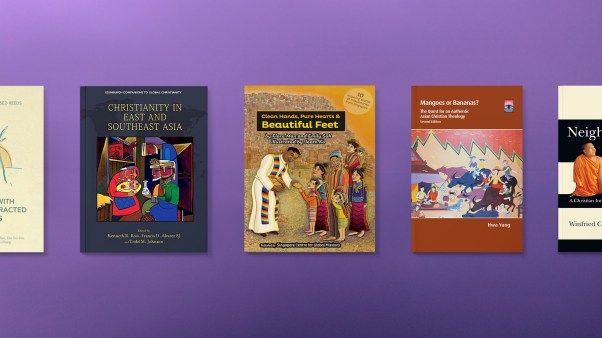Here is an intriguing question. For several centuries, the study of early Christianity has attracted the interest of multiple thousands of scholars, most of whom have applied the highest critical standards. Given the overwhelming mass of books that resulted from this project and the limited nature of the available source material, what on earth remains to be said?
To see one notable answer to that question, consider the work of the scholar Catherine Conybeare, who places those early Christian studies in a very broad historical context—in terms of not just political and social trends but the imaginative study of the senses and emotions. Like many contemporary scholars, she studies such matters as touch and aurality, matters earlier generations would have thought impervious to reconstruction. Her well-known book The Laughter of Sarah concerns the role of delight in Jewish and Christian exegesis.
In her new book, Augustine the African, Conybeare brings her interpretive toolkit to bear on the great church father, emphasizing the importance of his geographic and cultural origins. We already know, of course, a great deal about Augustine’s life and his theological reflections. But Conybeare shows how creative scholars can return time and again to a mine of material that still appears to be inexhaustible.
Intellectually, we may know Augustine came from Roman Africa, with its vital center at Carthage. But what difference, if any, did that make to his life and thought? How might these have differed if Augustine had been the product of Spain or Sicily?
For Conybeare, these origins were crucial. Augustine was absolutely grounded in a culture located in what we would today call the nation of Tunisia and its border fringe of Algeria, the region where his life began and ended.
At every stage, Augustine’s life and career must be understood in that African imperial context, with all its implications of hybridity, of ethnic and linguistic complexity, of aspiration and discrimination. These themes pervade Augustine the African. Based on impeccable scholarship and lucid writing, Conybeare’s book reshapes our understanding of that one (crucial) saint, and her insights extend to many other figures of the early church. The book deserves a very broad audience, not least because it recounts such a fascinating life story. Adding immensely to the book’s value, this study of the saint’s “erased Africanness” speaks into ongoing conversations about the long-lasting heritage of empire and colonialism.
I offer a paradox. As a part of the empire, Roman Africa was utterly distinctive but also quite typical. Yes, the particular mixture of cultures in Augustine’s Africa was peculiar to that region, but at the same time, it was one example of a much larger story.
When we think of the Roman Empire, we generally think of a society ruled by, well, Romans, those conquering military foreigners who built their spectacular cities, roads, and fortifications. Our minds might even replay the legendary scene in Monty Python’s Life of Brian, where a bumbling Jewish revolutionary protests, “What have the Romans ever done for us?”—right after conceding “the sanitation, the medicine, education, wine, public order, irrigation, roads, a fresh water system, and public health.” Our vision of Roman oppressors confronting insurgent natives owes much to our knowledge of first-century Judea.
But matters had changed fundamentally by the time Augustine was born in 354, and that was nowhere truer than in defining the category of “Romans.” Through the long centuries, local elites had come to identify ever closer with Roman ways, lifestyles, and culture, culminating in 212 with the extension of citizenship to all free men within the empire. (The decree came from the Roman emperor Caracalla, best known to modern audiences from the film Gladiator II).
Whatever their indigenous roots, the people of London and Córdoba, Milan and Cologne, Marseille and Carthage, were all Romans, and that status belonged to them just as much as to anyone born on the river Tiber. That did not of course mean that older cultures and languages vanished overnight, but they were increasingly marginalized. Romanitas, Latin for “Roman-ness,” was a matter of wealth, education, and social class. Whenever we look at early Christian leaders from Gaul or Spain, we have to place them in that context of an acquired culture and an ambiguous relationship to the indigenous past.
In that sense, Augustine’s North Africa was a microcosm of the wider Roman world. Here, Latin-speaking “Roman” elites—who might or might not have any Italian ancestry—lived alongside the speakers of Berber tongues, who today are more respectfully known as the Amazigh people.
Augustine himself personified that cultural mingling, as the son of a Roman father, who was likely the descendant of freedmen, and the famous Monnica, who was (almost certainly) of Berber stock. The family would assuredly have spoken Latin at home, and the saint never learned Berber—but when Monnica or Augustine told a slave or peasant to do something quickly, they presumably deployed at least a few select words of the older language.
For Conybeare, that mixed background repeatedly formed Augustine’s life and career. Although he lived in Milan and Rome, he actually did much of his writing in North Africa, notably at Hippo Regius, where he served as bishop from 396 until his death in 430.
Hippo itself offers a nice epitome of Augustine’s Africa, both its indigenous foundations and the colonial and imperial structures successively erected upon them. The city’s name is of Punic (Phoenician) origin, reflecting one early wave of colonizers. It later became a seat of the (Berber) Numidian kings, whom the Romans had conquered in the first century BC—hence the royal status implied by “Regius.” The Romans then reconstructed the city as a settlement for their own ethnic stock—literally, it was a colonia—but it can never have been far removed from those older native peoples and their cultures.
Augustine was highly conscious of that African background, and he describes contemporaries in terms of “we Africans.” In Italy, his closest friends shared that provincial background. Even so, he never had any doubt about his Roman status or his claim to the glories of a millennium of Latin culture and thought.
He lived, after all, five full generations after the edict of Caracalla. We can imagine Augustine’s shock and disappointment when he arrived in Italy and found himself mocked for his provincial accent, which in practical terms made it impossible to work as a teacher of rhetoric. Overnight, the faithful Roman became an outsider.
Much of Conybeare’s book explores that culture clash, with all its implications both psychological and theological. She does this brilliantly, forcing us to appreciate how Augustine’s theology grew out of “his own sense of himself as displaced and wandering.” Perhaps only someone as agonizingly cut off from full Roman status could write the woeful cry of mourning for the fallen imperial capital that inspired his City of God.
The problem of defining the universal as opposed to the local and provincial profoundly affected Augustine’s theorizing about the nature of the universal church and its ecumenical values. This issue became sharply evident in his debates with the Donatists, who questioned the validity of sacraments performed by priests who had compromised with Roman persecutors. Conybeare adeptly describes the savage feuds and schisms that were so pervasive within African Christianity. So often, her book compels us to reconsider everything we thought we knew about Augustine’s thought through that African lens.
Although this goes beyond even the ambitious scope of her fine book, I would add two footnotes that grow directly from Conybeare’s material. The first concerns the fate of Christianity in North Africa, in what for several centuries had been a critical hearth area of the faith. After the Islamic conquest in the late seventh century, Christianity vanished almost wholly from the region, probably because the “Romans” and Latin speakers fled, leaving behind the Berber peasants and nomads, whom that faith had touched only lightly. That does cast a rather grim light on the nature and extent of Christian evangelization in Augustine’s time.
Also, the essential work of placing Augustine in his African setting should never obscure how his life played out just as fully within the vast Roman Empire. When Augustine lay dying, his city of Hippo was being besieged by the Vandal people, who not only captured it but also went on to seize Carthage and to sack Rome itself in 455. Those Vandals came from what we would now call Poland, where they stayed until a series of messy interactions with Roman governments and armies led them to march through Germany, France, and Spain on their way to North Africa. That Vandal intrusion, which devastated the older Latin Catholic world, demonstrates the inseparable connection between the African and Roman realities.
Augustine famously distinguished between the glorious and unchanging city of God and the turbulent and sinful earthly city where we find ourselves in the present life. Conybeare’s book amply reminds us just how wrenchingly complex and conflicted that earthly city actually was—and how longingly Augustine turned to the city that is to come.
Philip Jenkins is distinguished professor of history at Baylor University. His latest book is Kingdoms of This World: How Empires Have Made and Remade Religions.
















